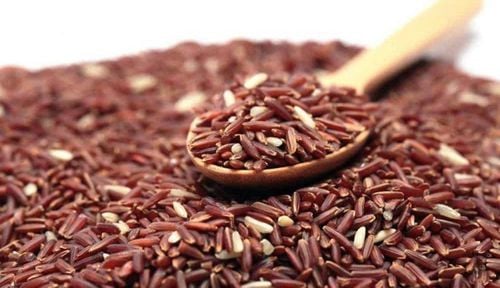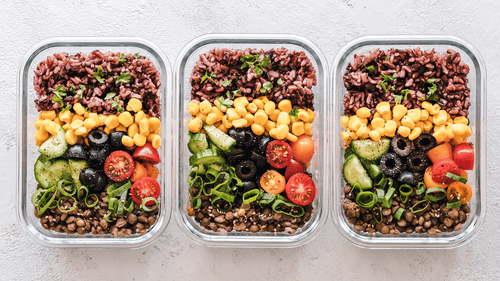This is an automatically translated article.
Rice is one of the most popular grains in the world, grown on every continent except Antarctica. According to statistics, there are now more than 40,000 different varieties of rice, which people use as a main dish in their daily meals.
1. What is rice?
Rice is a source of products obtained from rice, which is also one of the main foods of nearly half of the world's population.
Rice is often processed into dishes such as rice, porridge or ground into rice flour to make cakes and vermicelli. After the rice is milled and removed the husk, the rice grain will be obtained. Rice grains usually come in a variety of colors, such as brown, crimson and most commonly white.
In the rice grain contains many nutrients such as protein, fiber, starch and compounds that are beneficial for health. From ancient times until today, rice has become the "soul" of many different cuisines, typically Vietnam.
2. Grading of rice
Rice is often classified based on different colors, shapes and sizes, including 3 main types:
Short grain rice: is rice with a slightly round shape, when cooked, has a soft texture. and the stickiest of all rice. Medium grain rice: is rice with relatively short grain, after cooking has a soft texture, but not as sticky as short grain rice. Long grain rice is rice with a thinner grain that is four times the length and width and contains less starch. When cooked, it usually has a fluffy and fluffy texture.
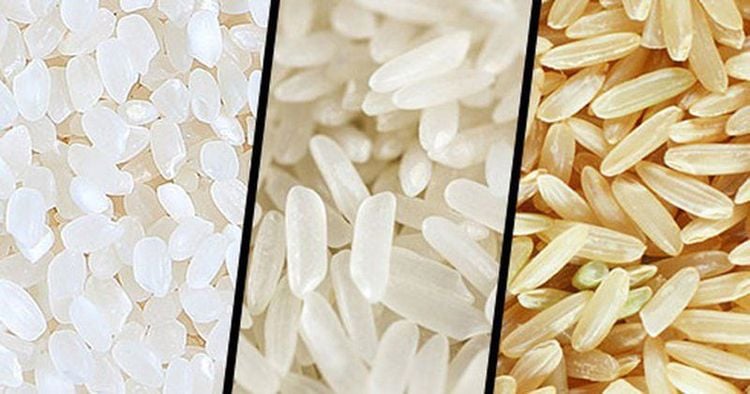
Gạo được chia thành 3 loại
3. Different types of rice
3.1. Brown rice (whole bran rice) Brown rice is rice that only has the outer husk removed and the bran part intact, which contains many nutrients and trace elements.
In brown rice contains essential nutrients, including starch, fiber, protein, vitamin B1, vitamin B2, vitamin B6, vitamin B3 and other important trace elements such as calcium, selenium, magnesium or iron.
Brown rice usually has 4 main types, including:
Brown rice: is the rice of white rice that is milled, only the husk is removed and the bran remains. Glutinous brown rice: is often used as an ingredient for yellow flower sticky rice - a famous specialty with many nutritional values for health. Types of glutinous brown rice include goose glutinous rice, charcoal glutinous rice, Huong glutinous rice,... Black brown rice: this is a type of rice that is especially useful in supporting the treatment of diseases such as cancer or heart disease. It is considered a "super grain" because it contains many essential nutrients such as fiber, vitamins and plant compounds, especially low in sugar. Red brown rice: is the right choice for those who are following a diet, vegetarian, weight loss or beauty regimen. Using red brown rice in your daily diet not only provides you with all the necessary nutrients, but also gives you a slim, healthy body. 3.2. White rice (refined rice) White rice also belongs to other whole grains, like black, red, or purple rice. This is a type of rice that has been milled with the husk, bran and germ layers removed, often polished to make the rice grain whiter.
It is the milling and polishing process that causes a significant loss of nutrients in white rice, which include fats, minerals, and vitamins. So white rice is usually less nutritious than brown rice.
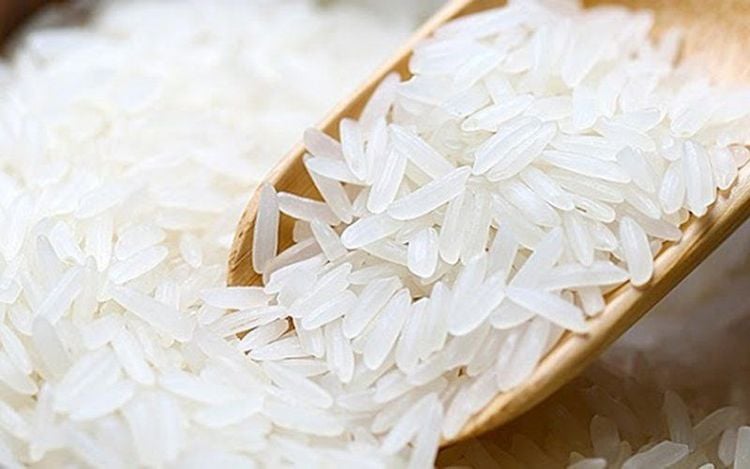
Gạo trắng có hàm lượng dinh dưỡng thấp
3.3. Arborio Rice Arborio rice is grown in Italy's Po valley, used to make a famous rice dish called Risotto. During processing, it releases the abundant starch present in the rice grain, creating a smooth texture. In addition to Risotto, you can also use Arborio rice to make Paella, a popular Spanish dish that smells like saffron.
3.4. Fragrant rice Fragrant rice includes Basmati rice, jasmine fragrant rice or other types of rice with a strong aroma. Fragrant rice often smells like roasted seeds or popcorn, the aroma is extremely natural and attractive. The substance 2-Acetyl-1-pyrroline present in rice grains is the determining factor for these characteristic aromas.
The taste and smell of fragrant rice often changes from year to year, like wine.
3.5. Black rice Black rice is also known as "forbidden" rice. Back many years ago, this type of rice was reserved only for the emperor of China, and was forbidden for commoners to use in their daily meals. However, today with just a few clicks at online stores or a quick trip to the supermarket, you can enjoy this rice like royalty.
Black rice is a short grain rice that turns purple when cooked. The rice's color comes from an antioxidant, called anthocyanin, which is found in blackberries or blueberries.
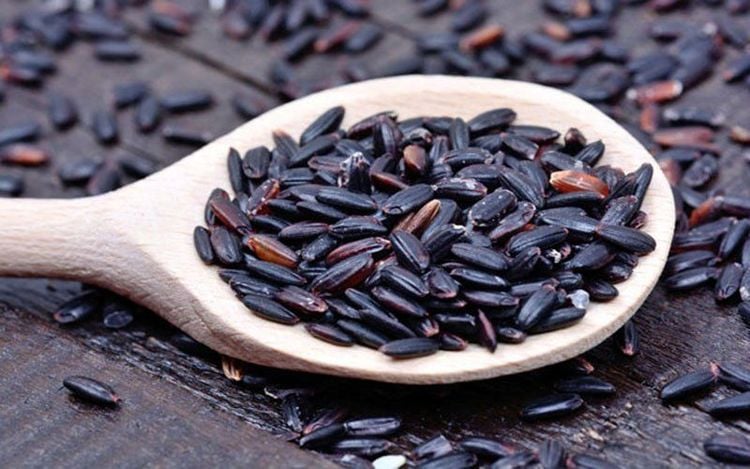
Gạo đen - hay còn gọi là "gạo cấm"
3.6. Sticky Rice Like all other types of rice, glutinous rice is gluten-free. Even the name of this rice shows its texture like glue. This texture makes it easy to shape them like rice balls.
Sticky rice is also known as sweet rice and contains amylopectin starch. The sweetness of this rice has made it popular in desserts.
Sticky rice is common in Asia, and comes in a variety of colors, such as brown, black, purple or white.
3.7. Himalayan and Bhutanese Red Rice If you're tired of brown or white rice, change the wind a bit to another delicate rice called Himalayan red rice. This type of rice often has long grains, which are a combination of many different flavors, bringing a unique, attractive taste. You can use Himalayan red rice to make dishes like fried rice or salads.
Another type of rice is Bhutanese red rice, which is usually short grained and has a nice texture. You can use them in Pilafs or make them a side dish.
3.8. North American wild rice North American wild rice, also known as Indian Rice, is native to North America. At first glance, this wild rice is not rice but a grass that grows along the waterway.
Wild rice is chewy on the outside and soft on the inside, with a pure and wild taste, exceptionally high in protein and a host of antioxidants.
Customers can directly go to Vinmec Health system nationwide to visit or contact the hotline here for support.
Reference article source: webmd.com




